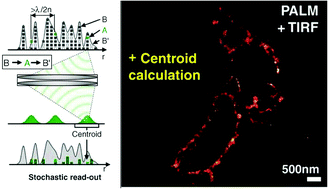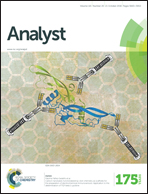Super-resolution imaging for monitoring cytoskeleton dynamics
Abstract
The cytoskeleton is a key cellular structure that is important in the control of cellular movement, structure, and sensing. To successfully image the individual cytoskeleton components, high resolution and super-resolution fluorescence imaging methods are needed. This review covers the three basic cytoskeletal elements and the relative benefits and drawbacks of fixed versus live cell imaging before moving on to recent studies using high resolution and super-resolution techniques. The techniques covered include the near-diffraction limited imaging methods of confocal microscopy and TIRF microscopy and the super-resolution fluorescence imaging methods of STORM, PALM, and STED.


 Please wait while we load your content...
Please wait while we load your content...